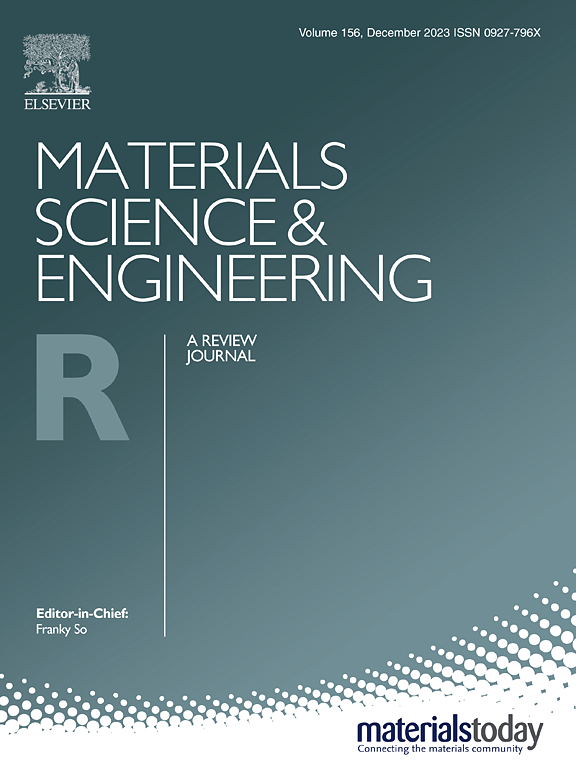不可燃碳酸盐基电解质配方防止高镍锂离子电池热失控
IF 31.6
1区 材料科学
Q1 MATERIALS SCIENCE, MULTIDISCIPLINARY
引用次数: 0
摘要
锂离子电池(LIBs)的安全性对消费者的安全至关重要,因此消费者的需求是无止境的。锂电池热失控(TR)和火灾的风险是阻碍高镍锂电池电动汽车和电动汽车市场扩张的担忧之一。TR的主要原因是传统有机液体电解质的易燃性,包括高度易燃的线性碳酸盐溶剂。用配方良好的不可燃液体电解质取代传统的易燃液体电解质,同时在阳极上构建热耐用的固体电解质界面(SEI),在阴极上构建阴极电解质界面(CEI),是缓解TR问题的有希望的第一步。在此,我们首次证明了不可燃的氟化碳酸盐和标准锂盐浓度(1.0 M)为基础的液体电解质配方,提高了Li+转移数,可以防止工业800毫安时石墨//LiNi0.8Co0.1Mn0.1O2(NCM811)袋电池的TR,并且在1 C下具有出色的600次循环性能,提供81% %的容量保留,没有Li枝晶。不可燃电解质衍生的坚固的SEI和CEI层有助于防止TR和金属从阴极溶解。不可燃液体电解质的配方技术为解决与lib相关的安全问题提供了新的机会,为下一阶段的储能解决方案带来了希望。本文章由计算机程序翻译,如有差异,请以英文原文为准。
Preventing thermal runaway of high-nickel Li-ion battery through nonflammable carbonates-based electrolyte formulation
The safety of lithium-ion batteries (LIBs) is essential for the secured safety of consumers, whose demand is therefore never-ending. The risk of LIBs thermal runaway (TR) and fire is one of the concerns that hinders the market expansion of high nickel LIB-powered electric vehicles and e-mobilities. A primary cause of TR is the significant flammability of traditional organic liquid electrolyte that includes highly flammable linear carbonate solvent. Replacing traditional flammable liquid electrolyte with a well-formulated nonflammable liquid one, along with construction of both a thermally durable solid electrolyte interphase (SEI) on anode and cathode electrolyte interphase (CEI) on cathode, is a promising first step in mitigating TR issue. Herein, we demonstrate for the first time that the nonflammable fluorinated carbonates and standard lithium salt concentration (1.0 M)-based liquid electrolyte formulation with promoted Li+ transference number enables the prevention of TR of industrial 800 mAh graphite//LiNi0.8Co0.1Mn0.1O2(NCM811) pouch cell and outstanding 600 cycles performance at 1 C delivering 81 % capacity retention, without Li dendrites. Nonflammable electrolyte-derived robust SEI and CEI layers contribute to the prevention of TR and metal-dissolution from cathode. The formulation technology of nonflammable liquid electrolytes offers new opportunities to solve the safety issues associated with LIBs, holding promise for next-phase energy storage solutions.
求助全文
通过发布文献求助,成功后即可免费获取论文全文。
去求助
来源期刊

Materials Science and Engineering: R: Reports
工程技术-材料科学:综合
CiteScore
60.50
自引率
0.30%
发文量
19
审稿时长
34 days
期刊介绍:
Materials Science & Engineering R: Reports is a journal that covers a wide range of topics in the field of materials science and engineering. It publishes both experimental and theoretical research papers, providing background information and critical assessments on various topics. The journal aims to publish high-quality and novel research papers and reviews.
The subject areas covered by the journal include Materials Science (General), Electronic Materials, Optical Materials, and Magnetic Materials. In addition to regular issues, the journal also publishes special issues on key themes in the field of materials science, including Energy Materials, Materials for Health, Materials Discovery, Innovation for High Value Manufacturing, and Sustainable Materials development.
 求助内容:
求助内容: 应助结果提醒方式:
应助结果提醒方式:


